- Case №1: the banking sector
- How it used to be
- How it should be
- The principle of free chairs
- NUMBER OF PLACES FOR AN HOUR!
- Scheduling via shift management
- These Salesforce ecosystem tools can be used to implement the strategies:
- Case №2: retail
- How it used to be
- How it should be
- Conclusion
2020 will surely go down in history as a year of major changes for the majority of classic business sectors. The pandemic situation and the necessity of social distancing have led to a change in many processes that used to seem unshakable. In this article, we will consider two cases with Salesforce-based solutions for businesses hit by COVID-19. One of the cases is highly relevant for the banking sector, and the other one - for retail.
Case №1: the banking sector
This case refers to the part of the banking sector that provides for a large customer flow and the fastest possible access to the service. First of all, this refers to transactions with an account that require the personal presence of a client. Such operations include check-cashing, fund withdrawals, working with safe-deposit boxes, etc.
How it used to be
Such operations, as a rule, presupposed a live or electronic queue. Let's imagine a bank structure that works with a client via the Salesforce interface. The bank has an electronic queue kiosk that is tightly integrated into Salesforce and operates according to the queue routing principle. The kiosk routes a client to a specific queue in Salesforce depending on the selected service/sub-service. The queue is connected with Omni-Channel functionality. Thus, the first operator in the queue who becomes available automatically receives the next application.
 In the new reality, this variant of working with an electronic queue is unacceptable, primarily because the system of social distancing forces banking structures to limit the number of people visiting a bank branch at any one time.
In the new reality, this variant of working with an electronic queue is unacceptable, primarily because the system of social distancing forces banking structures to limit the number of people visiting a bank branch at any one time.
How it should be
There are several ways to rebuild a process. We’ll divide them into two for convenience. Both processes are based on the scheduling of free slots but differentiate a little in their approach.
The principle of free chairs
The basis of this principle is the very same queue but with two important additions:
- It is important to know how many customers can be inside the building at once while keeping a social distance.
- It is important to know the approximate time interval during which it is possible to serve all the clients inside the building.
The queue should be manageable! As a result, we get two main parameters for calculating the capacity per time unit. Our final objective is to round up the calculations, considering the buffer for capacity and service time, to a simple indicator:
NUMBER OF PLACES FOR AN HOUR!
This is the very queue capacity that is quite simple to calculate and manage in almost any scheduling system. And what does the customer flow look like next? A client finds a slot (a day and time) via the website or call center. On the system side, no specialist is assigned to the client but a time slot in the queue is reserved. After arriving in the bank branch, the client will have their application processed by the first available specialist.
Generally speaking, this solution is quite simple to implement and support, but it has significant drawbacks:
- In order to guarantee social distance, quite significant buffers are laid in each of the metrics for the capacity calculation.
- This approach doesn’t take into account the real availability of employees due to its static nature.
Medium and long-term unavailability (holidays, days off, etc.) can be taken into account in such a system, but factors of short-term unavailability (sick days, a shift of the work schedule, etc.) scarcely affect the capacity and are covered by those buffers.
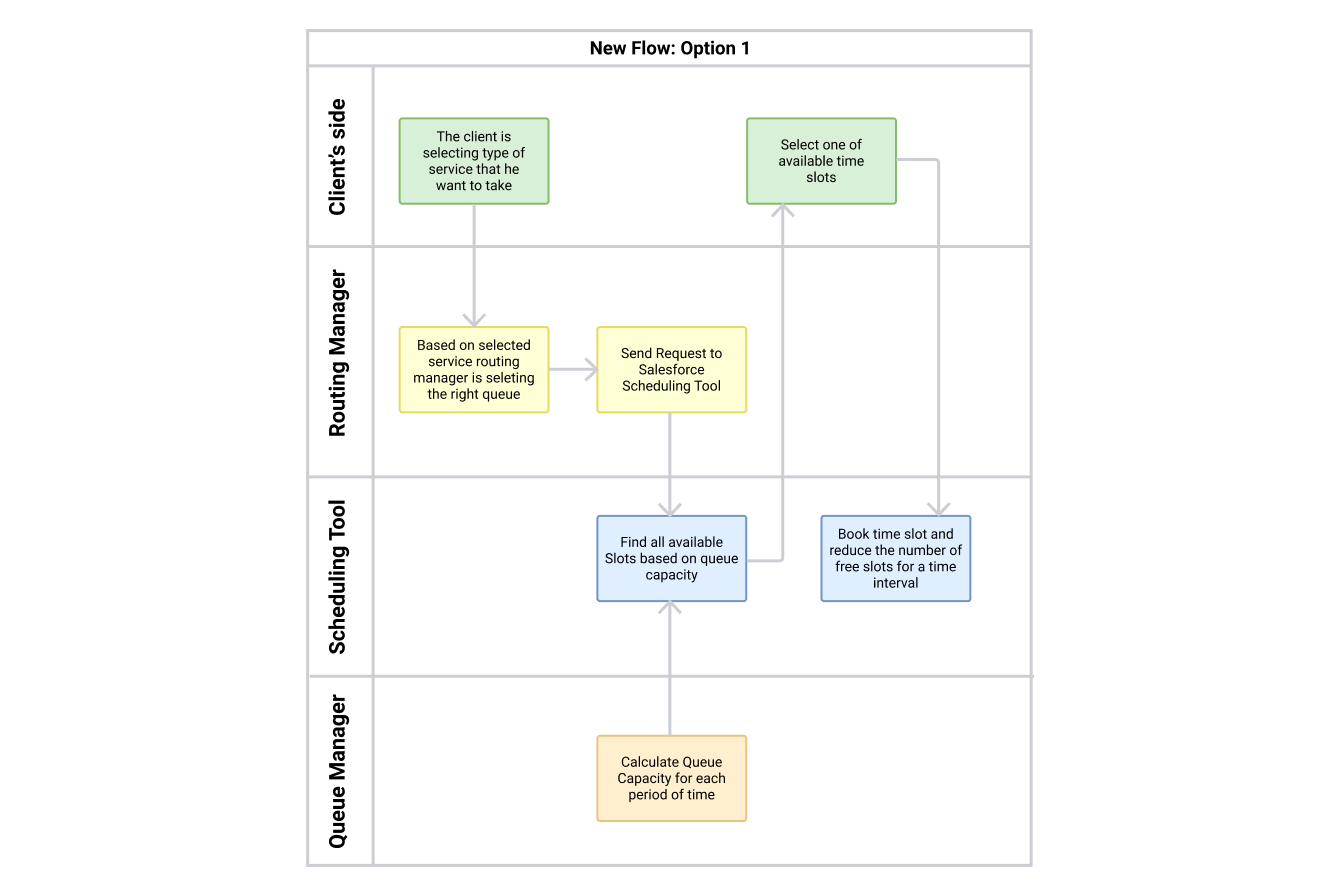
Scheduling via shift management
The second principle is based on the integration of shift management into the module's original scheduling system. Each employee determines their availability on a particular day. In this case, calculating the queue capacity is easier. It is dynamically calculated per unit of time based on the actual indicated availability of each employee.
In this case, the buffers laid in the first model will be much smaller. One can go even further and abandon the queue management. You have the availability of each employee and the client’s request, so why not assign an employee to process a request, immediately blocking out the time needed to provide the service? This approach also solves another problem - short-term unavailability in the form of a sick day.
Right after receiving a request for a day off, a manager has a list of Danger Appointments, for which they need to find a new time or new specialists at the specified time. This minimizes the risk of overcrowding the premises and the threat of violating social distance.
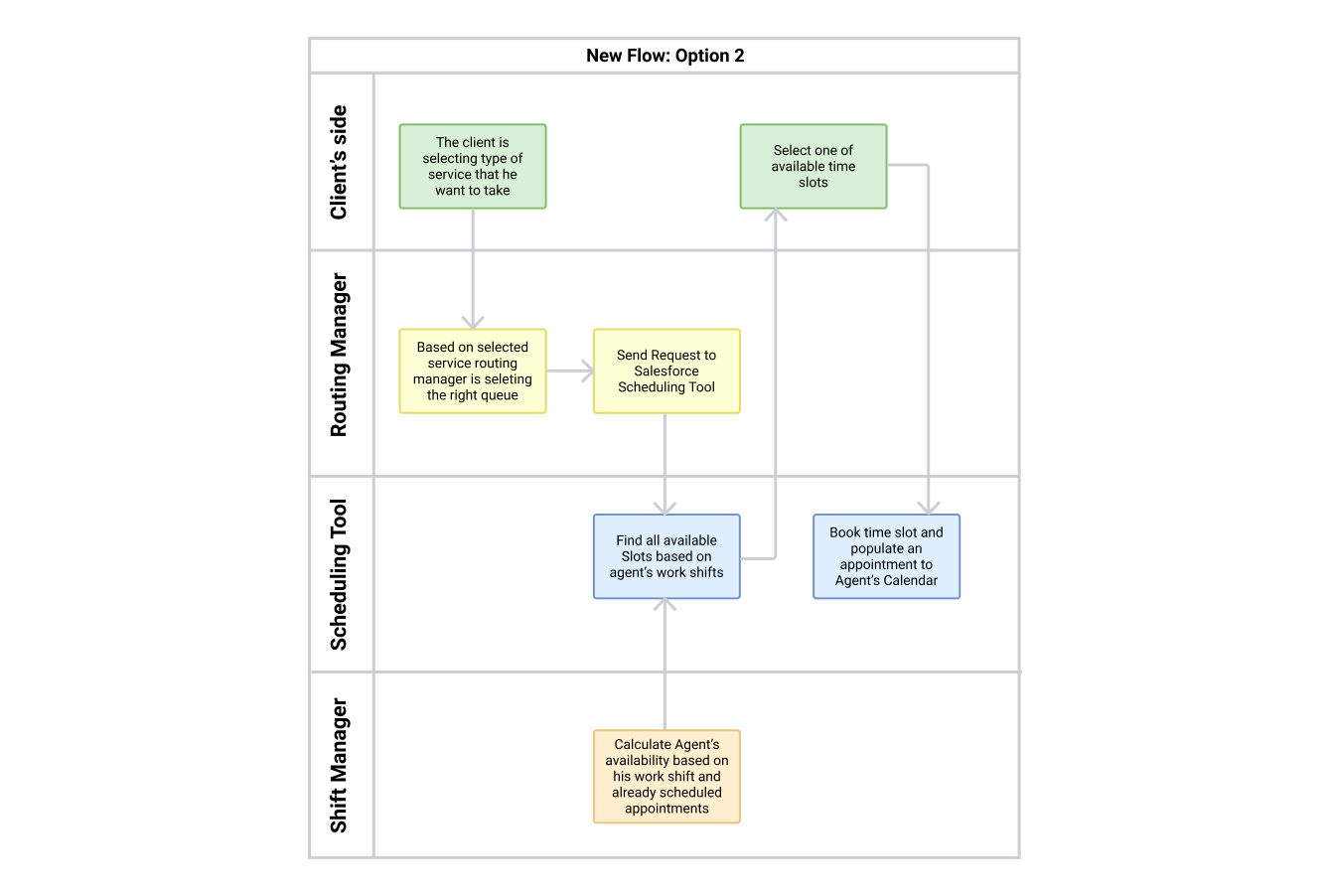
These Salesforce ecosystem tools can be used to implement the strategies:
- Salesforce Lightning Scheduler - a tool for shift management and scheduling based on it.
- Service Cloud Queue Management with queue capacity - there is no ready-made tool out of the box on the platform itself, so you can consider the option of custom implementation or products on the appExchange in the Queue Management and Scheduling sections.
- Work.com- an additional tool for shift management with a deeper link to the company’s internal processes (allows tracking PTO requests out of the box and controlling the workload of the office through the command center).
Case №2: retail
Our second case is perhaps even more traditional than the first one. It’s quite possible that the time of classic offline shopping is coming to an end. It's not just because of coronavirus. The increasing transfer from offline to online sales is a trend of the industry.
When the coronavirus pandemic started, this issue became even more acute. Those companies that hadn't invested enough in their online store regretted it bitterly. And those who had got involved in the new trend on time enjoyed a stage of active growth during the quarantine period.
Inditex, one of the largest fashion retailers in the world, plans to close up to 3,000 of its brick-and-mortar stores due to going online. Inditex was also doing well with online sales before, but the collapse of offline sales around the world forced the company to reconsider its global development strategy and place an even greater stake in the online mode.
Everything concerning online stores is clear, and we will not discover anything new here, but several other issues are worth discussing.
How it used to be
Let’s imagine a retailer whose business is built around the Salesforce platform. The store has a website where one can order goods and pay for them. There are two ways of delivery: the first one is delivery by courier for an additional fee, and the second one is pick-up from the nearest offline point of sale.
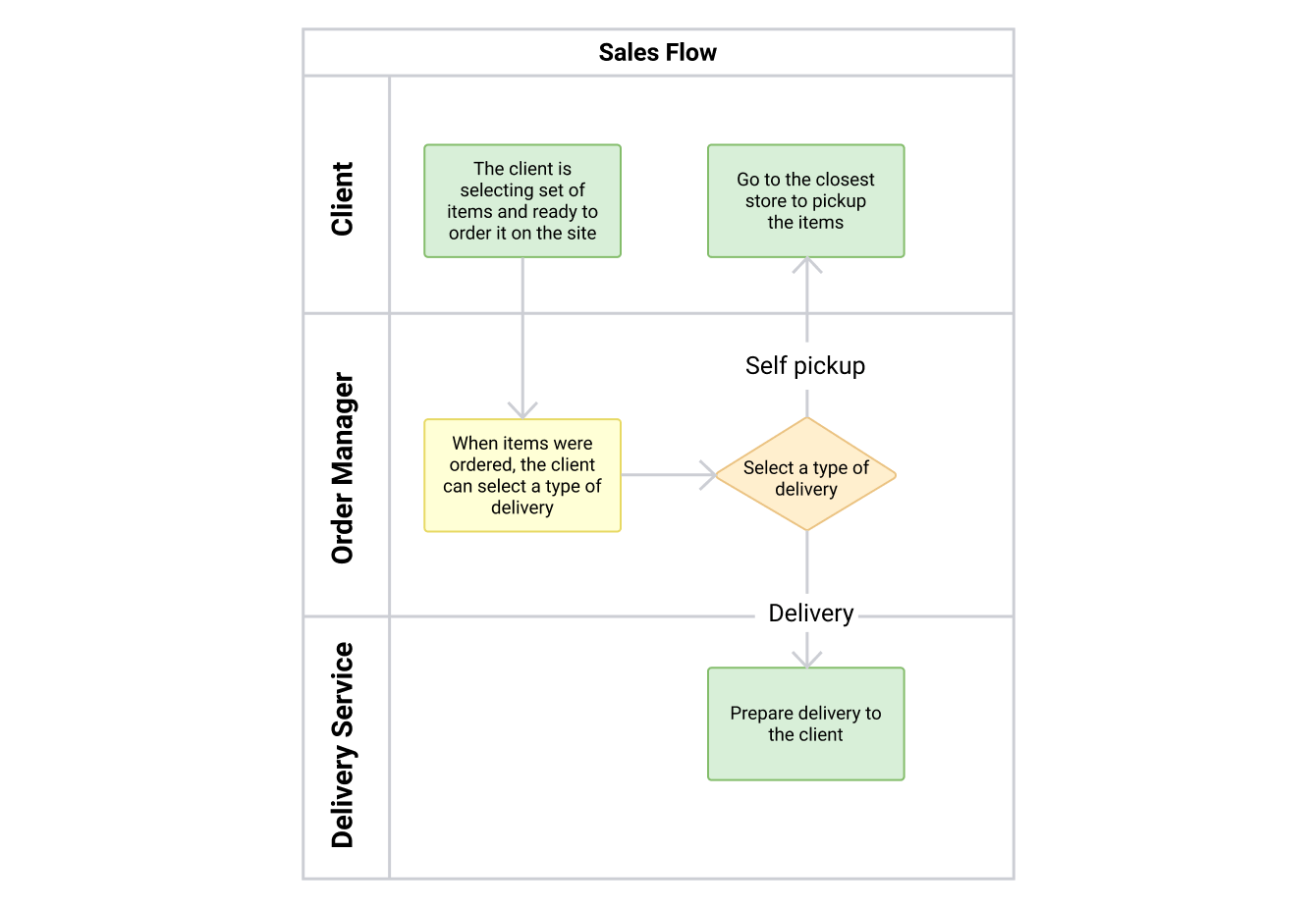 Now let's analyze the work of this offline store. Here we are not talking about any queue manager at the stage of entering the store. The system is operated by consultants who add the goods selected by the client to the cart via a tablet. After the shopping is completed, a consultant sends a request with a shopping list to the checkout, which is also integrated into Salesforce. The cashier receives information about the order via Omni-Channel and invites the client to the cash register for payment.
Now let's analyze the work of this offline store. Here we are not talking about any queue manager at the stage of entering the store. The system is operated by consultants who add the goods selected by the client to the cart via a tablet. After the shopping is completed, a consultant sends a request with a shopping list to the checkout, which is also integrated into Salesforce. The cashier receives information about the order via Omni-Channel and invites the client to the cash register for payment.
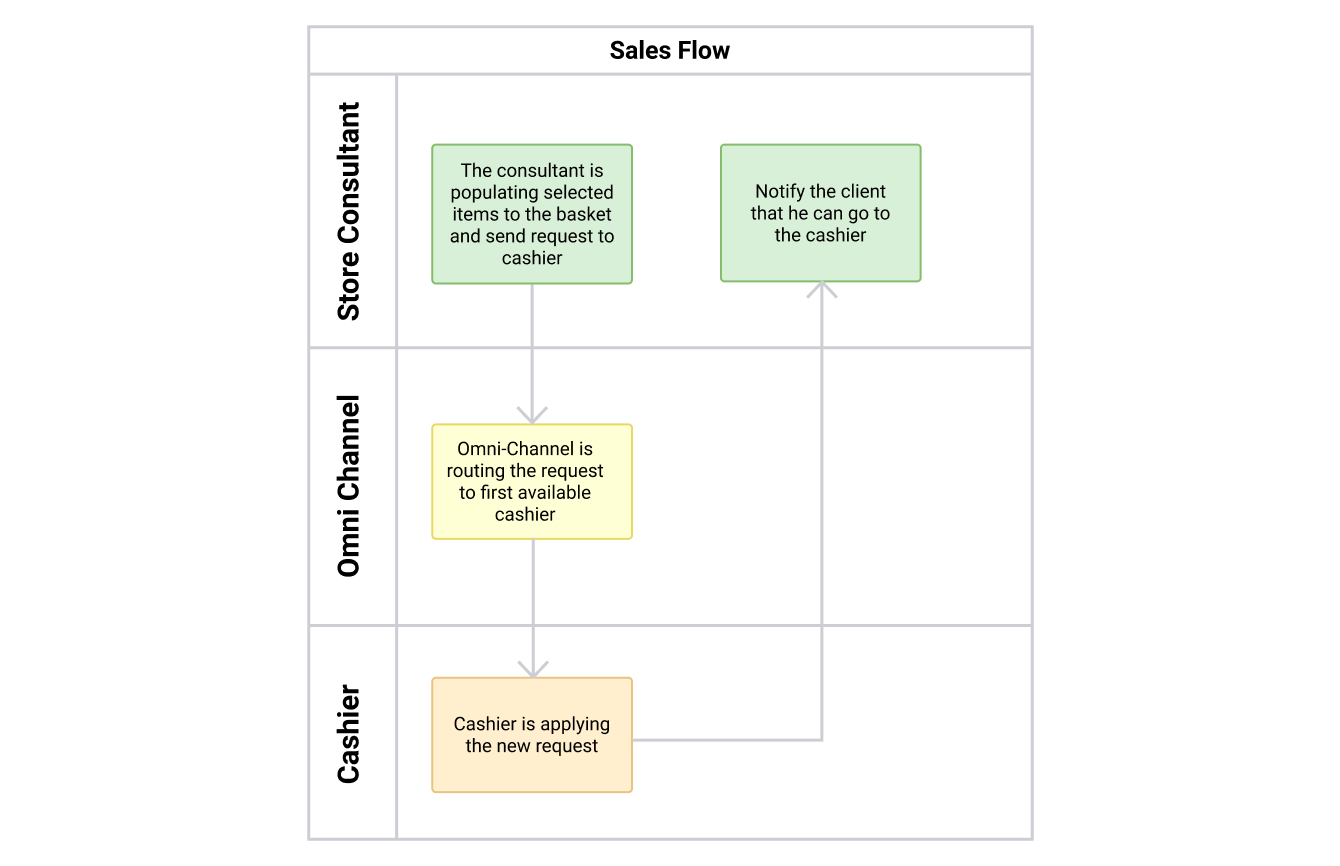
How it should be
Currently, there is no strong need for delivery services to change the flow of the order delivery by courier. Let's get straight to the self pick-up. What to do in this case, and how to organize self pick-up in compliance with all the precautions? Curbside Pickup, a simple and effective way of ordering and receiving goods, has become unprecedentedly widespread, primarily in the USA.
Its steps are something like this:
- Online store order and payment.
- Selection of the day and time interval when the client wants to pick up the goods. It is based on the number of parking spaces and the average order pick-up time
- Confirmation of arrival to the store via the order form, phone call, or SMS.
- Pick-up of the order.
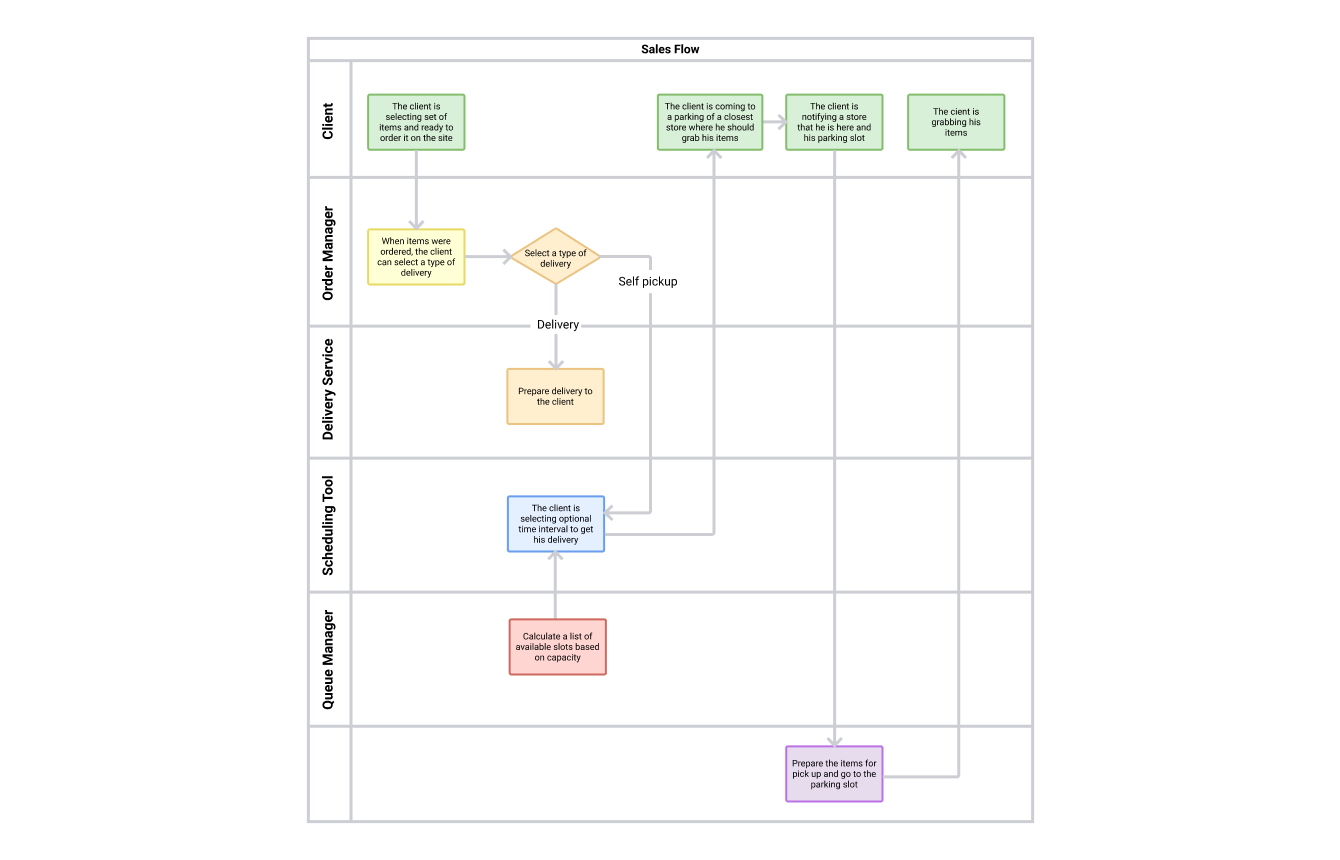 From the social distancing perspective, everything is simple and as safe as possible.
From the social distancing perspective, everything is simple and as safe as possible.
Now let's move on to the offline store and talk about how the company is going to solve the issue of trying on? Unfortunately, not every purchase can be made without prior physical contact with the thing.
There are several options for solving this issue. The first one presupposes not opening new offline stores in the current conditions and filling the basic needs for trying on clothes by increasing the capacity of the delivery service. In this case, clothes will be delivered and tried on at a residential address; all this with the limit “up to X items.”
The pros and cons of this approach are obvious. Due to the delivery limit, it’s impossible to see all the interesting options live. This ultimately has an adverse impact on sales.
Bearing in mind all the drawbacks of the first option, we believe that the option of limited admission of visitors to the store seems optimal. Based on the number of fitting-rooms, the size of the indoor space, and the number of cash registers working, we obtain the safe throughput of the store.
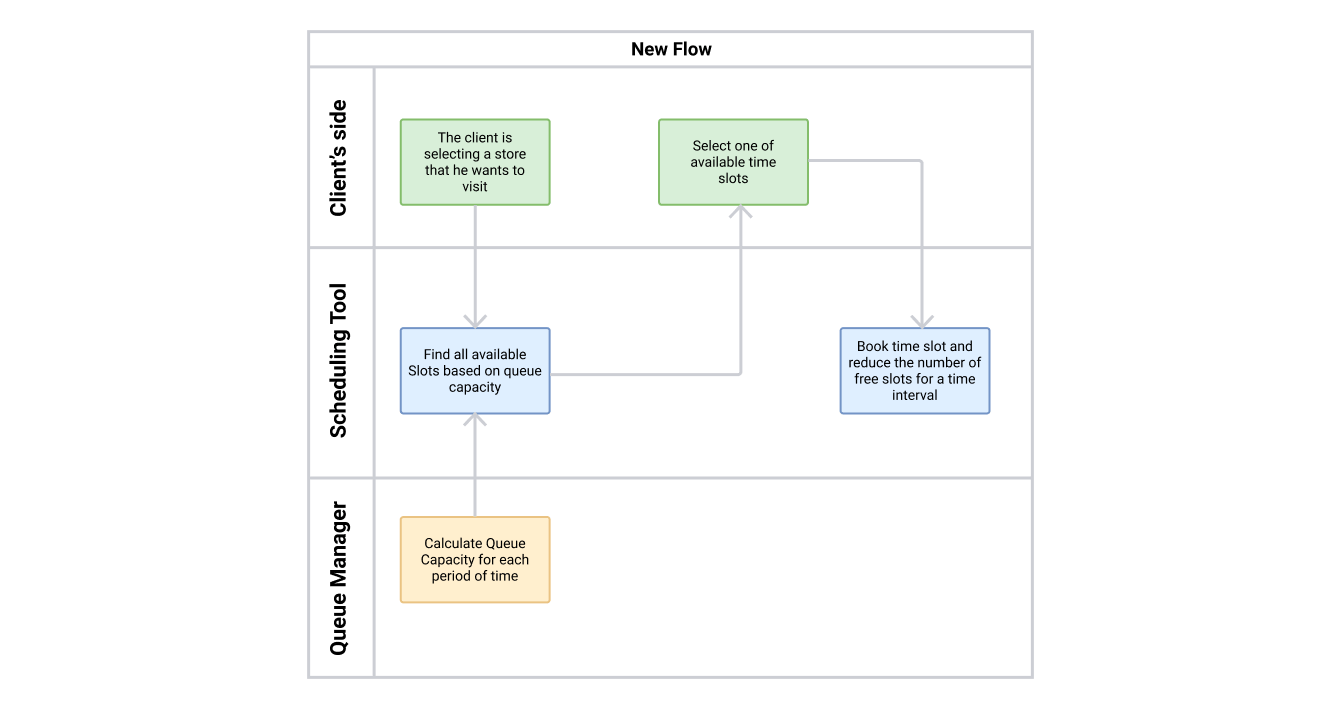 Salesforce ecosystem tools recommended for such a solution are:
Salesforce ecosystem tools recommended for such a solution are:
- The same tools as in case №1.
- Commerce Cloud - for organizing online sales.
- CTI Connector - a call center organization tool for Curbside Pickup.
- Twilio Connector - an SMS integration tool for Curbside Pickup.
Conclusion
As you may have noticed, the solutions to both issues are actually based on the same thing - queue capacity and the principle of free chairs. These options surely don’t solve all the problems of retail businesses that exist at the moment, during the pandemic. For example, in the second case, the approach solves the issues posed, but booking time for a trip to the store challenges existing shopping habits. Additionally, this solution kills all random traffic and reduces the likelihood of spontaneous purchases.
We will talk about the formation of new consumer habits and the place of E-commerce and Digital Advertising & Marketing in the Salesforce ecosystem in the next articles. In the meantime, the conclusion is the following: as queues can’t disappear completely, they should at least become much smarter. After all, many industries, where an ordinary live queue was considered the norm yesterday, are now faced with a tough choice. For them, such changes are not just a matter of further development and digital transformation of the business model. They are a matter of survival.




